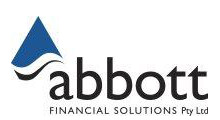Chances are, buying a home will be the biggest, most expensive and most exciting purchase you’ll make during your life. Saving a healthy deposit is a good start, but if you’re like most Australians, you’ll need to take out a home loan to help fund your purchase. Here, we explain how different home loans work and what to look out for.

How home loans work
A ‘home loan’ or ‘mortgage’ is a sum of money loaned to you by a financial institution so you can buy a property. In return, the lender uses the property you buy as security for the loan. Ultimately that means if you fail to make your loan repayments, the lender has the right to sell the property to settle your debt.
When deciding which loan is right for you, consider the type of loan or features you need, the interest rates on offer and the fees involved. In general, the more features, the higher the costs.
Types of home loans
Variable rate home loan
If your loan has a variable interest rate, the repayment amounts will change when the lender adjusts its rate – for example, when the Reserve Bank of Australia lowers or raises the cash rate and your lender follows suit.
The advantage of a variable rate is that you can pay off your loan early without paying a penalty. You can also transfer your loan to another lender without loan-break costs. And if your variable interest rate falls your repayments will also fall so you have the option to continue paying the same amount and pay more off the principal. The downside is that if your variable rate goes up, so will your minimum repayments.
A fixed rate home loan
As the name suggests, a fixed rate loan means that your regular repayments are ‘fixed’ (i.e. they stay the same) for the period of the fixed rate home loan, regardless of changes in the economy and cash rate. These loans can provide certainty when it comes to knowing what your regular payments will be. Generally, you’re able to fix the interest rate on these types of loans for up to five years.
At the end of the fixed term you can arrange for another fixed term or move to a variable rate home loan. Keep in mind that fixed rate loans are generally less flexible than variable rate loans. For example, you may incur fees if you want to make extra repayments. Also, if you want to change lenders or pay off your home loan during the fixed term you may be charged break fees, which can be considerable.
Split home loans
If you like the certainty of a fixed interest rate but want some of the flexibility that comes with a variable rate loan, you can generally incorporate both options into one with a split home loan. You can choose how much you repay at variable and fixed rates. This means, you can pay off part of your loan sooner while also having some protection against rate increases.
Interest-only home loans
These loans can appeal to property investors, as the interest paid can be a tax deduction. With an interest-only loan, your repayments only cover the interest on the loan without reducing the principal. That means, the original amount you borrowed will not reduce over time. Additionally, if the value of the home doesn’t increase, or decreases, you run the risk that you won’t build any equity in your home despite making monthly payments.
The interest rate versus the comparison rate
When you see a home loan advertised, you may notice two rates displayed – the interest rate and the comparison rate.
The interest rate is the annual interest cost for borrowing money, but it doesn’t take into account any fees. The comparison rate incorporates the annual interest rate as well as most upfront and ongoing fees, providing a clearer picture of how much you’ll be up for. The comparison rate can be helpful, as some home loans with lower interest rates are laden with fees, so while they appear cheap, they aren’t.
The comparison rate is calculated based on a $150,000 principal and interest loan over a 25-year term, so you can compare across providers but it’s not necessarily an accurate rate for your circumstances. When considering home loans, it’s always a good idea to do your research and speak to lenders and ask if they can give you a better rate than the advertised rate.
Understanding fees and charges
When comparing home loans, it’s important to understand the various fees each lender may charge. Here are some of the common fees and charges to look out for:
|
Fee type |
Description |
|
Application fee |
A one-off fee charged by your lender for setting up your home loan. This may also be called an establishment fee, upfront fee or set-up fee. If this fee isn’t charged, check if you’re paying higher ongoing fees instead. |
|
Ongoing fees |
Also known as administration or service fees, these are charged every month or year for administrating your loan. |
|
Redraw fee |
Some loans provide redraw facilities which allow you to ‘redraw’ or take back any extra repayments you’ve made above the minimum. However, some associated fees can vary from lender to lender, so be sure to check. |
|
Fixed rate ‘break’ fee |
If you break your fixed rate home loan, you may have to pay a ‘break fee’. This can be significant and can only be quoted at the time you’re considering breaking the loan, so be sure to speak to your lender to find out. |
|
Early exit fee |
Also referred to as an early termination, deferred establishment, deferred application or early discharge fee, you may have to pay this fee if you pay out your home loan in full within a set period of time (eg five years). Note that exit fees were banned on new loans from 1 July 2011. |
|
Discharge fee |
This fee may be charged when you pay out your home loan in full or are refinancing to another lender. |
|
Settlement fee |
The settlement fee is the amount you pay your lender for their work with regard to the settlement. Some lenders charge a fixed fee, while others charge based on the value of the transaction. |
Home loan pre-approval
When house hunting, you can apply for a home loan ‘pre-approval’ (also known as a ‘conditional’ approval) from your bank so you know how much you can afford to borrow. Taking this step can help to narrow your search and give you some peace of mind.
The lender will assess your financials, which means the process can take some time and effort. While getting pre-approval can be a useful step, it is not a guarantee that your home loan application will be approved. They are intended to be a guide that your application fits the lender’s criteria, however it’s important to get full, unconditional approval before finalising a property purchase.
Source: AMP November 2021
Important:
This information is provided by AMP Life Limited. It is general information only and hasn’t taken your circumstances into account. It’s important to consider your particular circumstances and the relevant Product Disclosure Statement or Terms and Conditions, available by calling 07 3245 3438, before deciding what’s right for you.
All information in this article is subject to change without notice. Although the information is from sources considered reliable, AMP and our company do not guarantee that it is accurate or complete. You should not rely upon it and should seek professional advice before making any financial decision. Except where liability under any statute cannot be excluded, AMP and our company do not accept any liability for any resulting loss or damage of the reader or any other person. Any links have been provided for information purposes only and will take you to external websites. Note: Our company does not endorse and is not responsible for the accuracy of the contents/information contained within the linked site(s) accessible from this page.


